Engaged Anthropology Grant: Michaela Howells
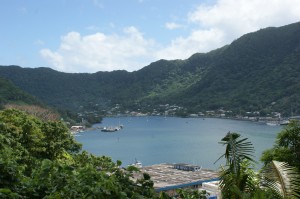
Michaela Howells is Assistant Professor of Biological Anthropology at the University of North Carolina Wilmington. While a doctoral candidate at the University of Colorado, Boulder, Howells received a Wenner-Gren Dissertation Fieldwork Grant to aid research on ‘The Impact of Psychosocial Stress on Gestation Length and Pregnancy Outcomes in American Samoa,’ supervised by Dr. Darna Dufour. In 2015, she received the Engaged Anthropology Grant to aid engaged activities on ‘Promoting Dialog Between Health Care Providers and Pregnant Women on American Samoa’.
American Samoa is the southernmost territory of the United States. Found under the Southern Cross, American Samoa straddles the reality between a globalized community and one embedded in traditional ideals and values. In 2011 I moved to American Samoa’s big island, Tutuila, to study the effects of prenatal psychosocial stress on pregnancy outcomes of Samoan women. Thanks to the Wenner-Gren Foundation and the National Science Foundation I was able to stay for nearly two years and found a relationship between the stressors experienced by low status women and their infant’s low birth weight. This project informs my ongoing research and was made possible by the committed staff of the American Samoan Department of Health (DOH) and LBJ Tropical Medical Center (LBJ) – the island’s only hospital.
Since leaving the island in 2013, I have been awarded my PhD and became an Assistant Professor of Anthropology at the University of North Carolina Wilmington. Although I have spent the majority of the last three years writing, presenting, and teaching about Samoa, I also suffered the disconnect so frequently experienced by professionals leaving their field site. I missed the women I worked with, and the simultaneously wonderful and infuriating island that I called home. Wenner Gren’s Engaged Anthropologist Grant gave me the opportunity to return to American Samoa in order to share my results and skills with the health care community. Inadvertently it also renewed my excitement for field work and strengthened my relationships with my American Samoan colleagues.
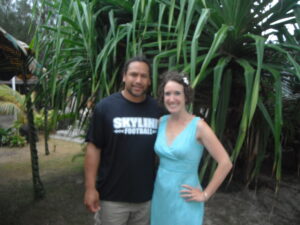
Originally, I had planned to host prenatal care workshops and training programs across the island. However, a week before my arrival, a medical team funded by retired Pittsburgh Steelers player Troy Polamalu had held extensive medical clinics throughout the community. Troy’s program, entitled Fa’asamoa, held free clinics that extended care to many of the island’s hard to reach residents. At the same time, it overextended many of the health care staff and disrupted normal clinic hours. Upon arrival, it was made clear to me that another mode of outreach would be more useful and appreciated.
When I initially worked with the women’s health community of American Samoa, a frequent point of concern was the lack of bilingual women’s health care educational materials. The available education materials were written in English and frequently featured pa’palagis (white people), a minority on island. Taken together, the health care professionals felt that these posters did not reflect Samoan culture and thus missed an important opportunity to educate women. As a result, I launched a collaborative project between the women’s health professionals at the DOH, LBJ, and Women Infant Child (WIC). We decided to develop five educational posters that focused on women’s reproductive health. These posters were printed and disseminated to women’s health care clinics across the island.
Although the mode at which I chose to achieve my goals changed, the core goal of supporting educational outreach regarding women’s health in American Samoa had not. Reframed, I met the four objectives of my Engaged Anthropologist Grant:
Objective 1: Create an additional tier of education regarding women’s health. The medical professionals at DOH, LBJ, and WIC do an outstanding job of educating women on island. The posters we developed work in conjunction with the one on one education that health care professionals are sharing with women during their appointments. These posters simultaneously act to both introduce and reinforce this important information in the target population. I was also invited on a popular morning radio talk show where I discussed my dissertation work, my current project and answered questions about women’s health issues. Finally, our posters were featured in the widely read Department of Health Newsletter.
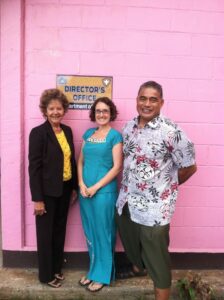
Objective 2: Create culturally relevant, long lasting health care material in conjunction with the DOH, LBJ, WIC women’s health care staff. This work was done in collaboration with Samoan Doctors, Nurse Practitioners, Registered Nurses, Licensed Practical Nurses, Nursing Assistants and Nurse Educators. Recognizing that funds and time are equally limited for the women’s health community, it was suggested that I brainstorm with women’s health care professionals at a prearranged Hanson’s disease (Leprosy) workshop. This three day workshop allowed me to further integrate into health care community while having a captive audience for a brainstorming meeting over lunch. On the first day of this workshop I sat with some of the more seasoned nurses and outlined the five poster themes and written materials within those posters. These emerging poster themes included prenatal care, high risk pregnancy, nutrition during pregnancy, available birth control options, and breast feeding. I returned the next day with these notes typed up and spent lunch reviewing these themes with a larger portion of the women’s health care community.
By the end of the Hanson’s disease workshop we had developed the necessary text to create our posters. Over the following three weeks, I shaped the posters with near constant feedback from the women’s health care community. Under the direction of the DOH’s Director of Nursing Margaret Sesepasara, I was able to collaborate with a variety of specialists. For example, our birth control poster was finessed by the Director of Family Planning at LBJ. By working together we were able to create Title 9 approved educational materials that helped them reach compliance in health education.
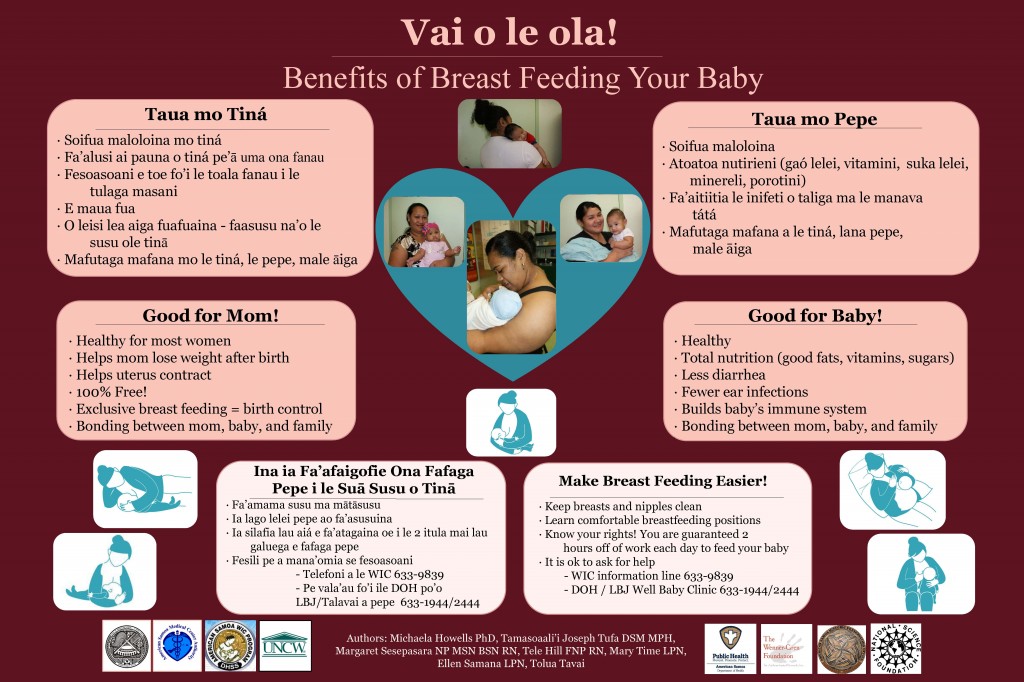
With material support (a high quality camera) from the American Samoa Historic Preservation Office (HPO), and the support of the DOH nursing staff I took photos of pregnant Samoan women, Samoan babies, health care professionals, and clinics. Written permission was garnered before I took the photos. I visited the local farmer’s market and photographed healthy Samoan foods (local fish, vegetables), and with a local store I constructed a photograph of less healthy food choices (corn beef, chips, etc). In addition I chose culturally appropriate colors to illustrate these posters.
Objective 3: Print posters and share them with the four women’s health clinics (DOH and LBJ) and WIC. The cost of printing and laminating these large, colorful posters was more than I had originally budgeted. However, I was able to gain sponsorship from a local sign company, All Star Signs, to offset the costs. As a result, I was able to disperse these posters to the appropriate clinics around the island.
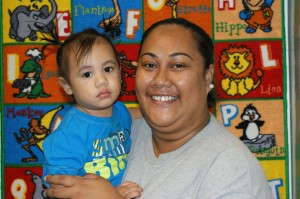
Objective 4: Physically disseminate copies of my original Wenner Gren funded dissertation. Although I had shared components of this research before, I sent packages of materials to leaders at the DOH and LBJ prior to arriving on island. These included copies of my dissertation, abstracts from papers I had given (many co-authored with Samoan colleagues), and manuscripts for upcoming articles.
The posters look beautiful, and were met with great support. However, there was an intangible benefit that came from returning on an Engaged Anthropologist Grant. By returning as a fully vested professional anthropologist with time and money to invest directly into the medical community, I was able to strengthen many of the lines of communication I developed during my original tenure on island. It was empowering to go back to my island home with something to give rather than take and am excited to continue working in American Samoa.